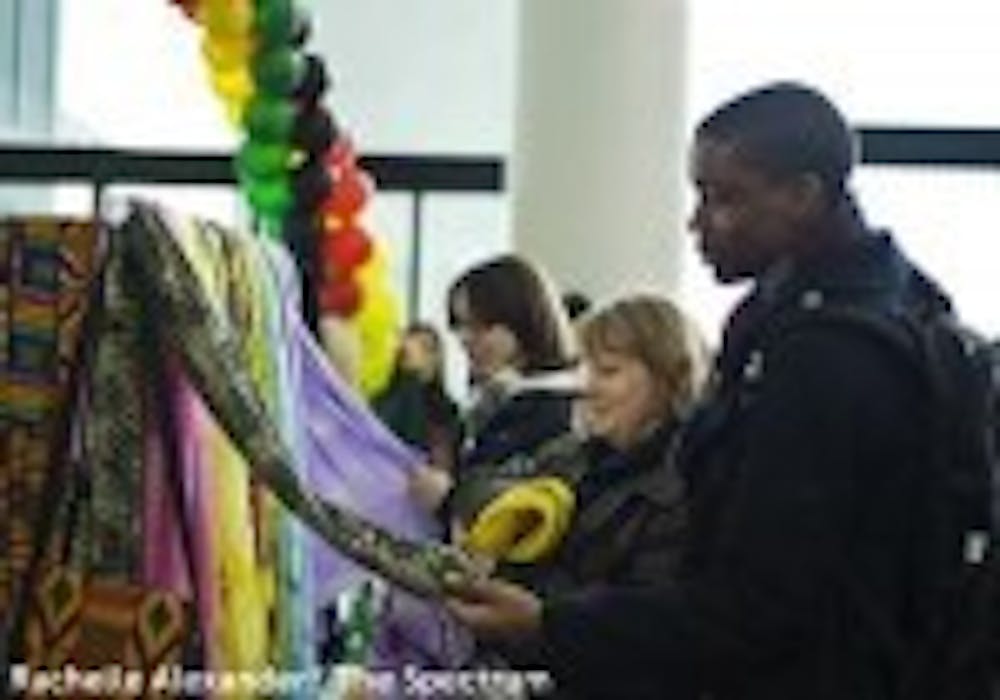Getting through the Student Union Lobby was almost as hard as getting to and from Canada this past Wednesday when students needed a passport to enter an exhibit of the five regions of Africa as part of the 12th annual African Cultural Bazaar.
Once they passed through the customs archway, decorated with multi-colored balloons, students were able to explore African culture and traditions.
Guided tours were available through the decorated territory from campus experts, including Julie Ficarra, a sophomore international studies major that studied abroad in Tanzania in Eastern Africa and learned to speak Swahili. Student guides discussed the geography, religions, languages, industries and calamitous incidences of Africa.
"Bazaars are designed after a marketplace idea where an exchange of ideas and cultural traditions happen," said Naomi Pabon-Figueros, a graduate assistant for Student Affairs. "The purpose is to give students an opportunity to learn something about African culture, meet other students, have some food and just have a good time."
Many students enjoyed the information provided at the event, seeing similarities between life in the United States and life in Africa.
"I'm really glad I came," said Bojan Percevic, a sophomore legal studies major. "The information provided cleared up a lot of stereotypes that people might have about Africa, such as it being predominately desert and inhabited by tribes, but it's not all like that."
Activities included games, arts and crafts, a human rights table and a puzzle of Africa competition. Local vendors sold traditional African items such as jewelry and fabrics. Traditional African music from different regions of the continent played in the background throughout the day.
Students got to play Mancala, an ancient African game that is possibly the oldest known game in the world. Pravin Pieris, a sophomore business major, volunteered to help teach students how to play the game during the bazaar.
"Students who didn't know how to play caught on really quick and truly enjoyed themselves," Pieris said. "It seemed that they liked learning knew things and that made the bazaar a great success."
Pabon-Figueroa said the event not only celebrated Africa, but also UB students' willingness to be culturally open and diverse.
"It is extremely important to spread cultural diversity, especially on our campus because UB is very diverse," said Monique Tabor, a senior psychology major. "Students need to be culturally aware about the people they go to school with and who they see every day."
Ian Fineberg, a sophomore communication major, thought the African Bazaar gave students a chance to learn, create and experience African food.
"It's a great learning experience," Fineberg said. "It's not quite like actually going to Africa, but it comes pretty close."
This year's theme that incorporated the colors of Africa made the event different than years past. Five colors represented five distinct areas of the African continent, and conveyed important ideas about African life and spirituality. The various ways these colors are used reflects the diversity of African cultural traditions.
"I'm half African American so I came to check out my culture," said Cassandra Hawkins, a freshman occupational therapy major. "It's crucial for everyone to acknowledge other cultures besides their own because it makes you more accepting towards others."





